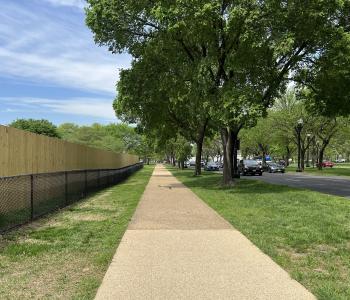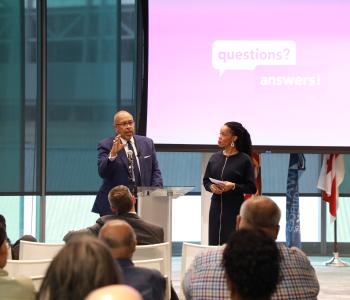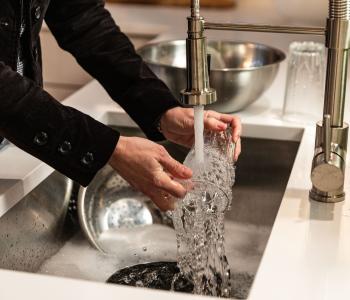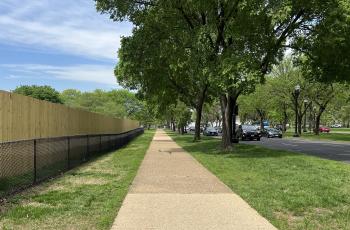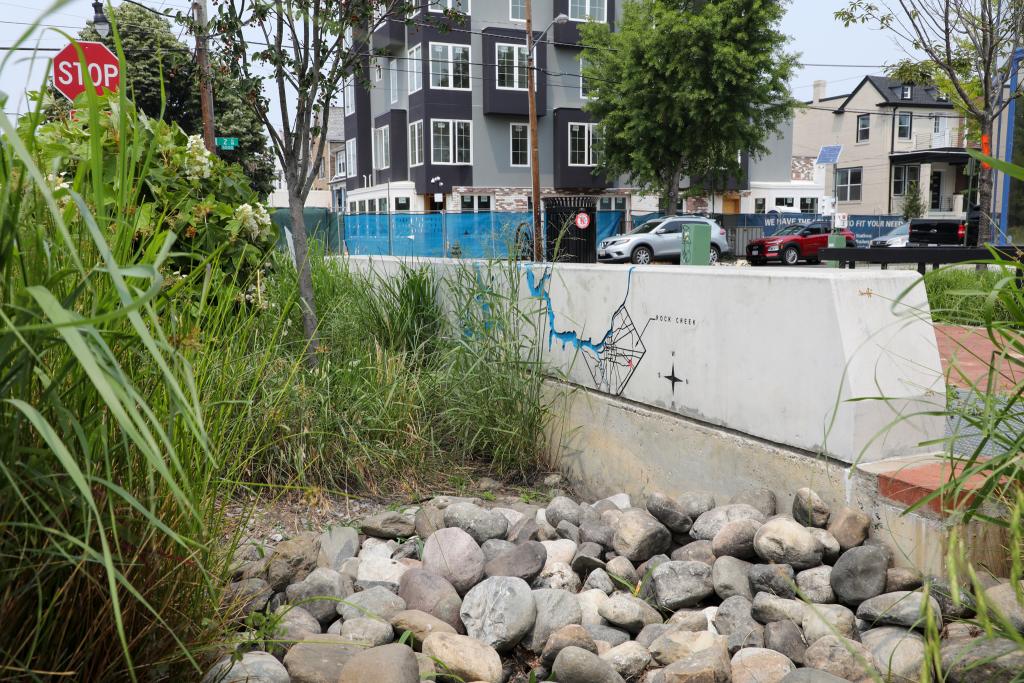DC Water, Residents and Mayors Task Force Celebrate Progress in Bloomingdale/LeDroit Park
Today, DC Mayor Vincent C. Gray, City Administrator and Chairman of the DC Water Board of Directors Allen Y. Lew, and DC Water General Manager George S. Hawkins broke ground on the First Street Tunnela large, underground cistern that will store stormwater during intense rainstorms to mitigate flooding in Bloomingdale and LeDroit Park. Also today, the group celebrated two large measures already in operation in the neighborhoods that are providing some flooding relief.
The two neighborhoods are connected to an undersized sewer system and have been subject to flooding during heavy rains for more than a century. DC Waters long-term approach to this problem, the Clean Rivers Project, is a tunnel system for the District of Columbia that will add capacity to the sewers and is scheduled for completion in 2025.
All of the measures marked at todays event came from the Mayors Task Force Report on the Prevention of Flooding in Bloomingdale and LeDroit Park. Mayor Gray established the task force in August 2012 after four successive flooding events. Mayor Gray named Mr. Lew and General Manager Hawkins as co-chairs.
Commenting on todays celebration, Mayor Gray said, "I convened the Task Force to investigate whether we could put in place interim measures before DC Waters long-term solution (The Clean Rivers Project) is complete in the next decade. I applaud the Task Force and DC Water for their ingenuity, coordination and commitment to solving the flooding issues. The residents in these neighborhoods have seen improvement already, and long-term relief is on the way at a faster pace."
DC Water Chairman Lew said, "This is a problem that has persisted for more than a century, but Mayor Gray made it a priority and tasked us with finding solutions that could be implemented immediately to make these communities whole and greatly reduce the risk of flooding. Thats why we are here today to break ground on the First Street Tunnel nine years ahead of schedule."
DC Water General Manager Hawkins said, "Our team investigated more than 40 different engineering solutions and crafted a creative plan to address the flooding with incredible speed. The two measures in place have proven successful through the tests of this springs rains. These solutions by themselves do not solve the problemwe most likely will still have flooding in a severe stormbut the progress is apparent and we are well on our way to offering lasting relief."
First Street Tunnel
Todays groundbreaking is for the First Street Tunnel, a 20 1/2-foot diameter tunnel under First Street, NW. The Authority will construct this tunnel to hold eight million gallons of wastewater and stormwater during heavy rain events, using a temporary pumping station to carry flow into the Northeast Boundary sewer after the storm passes. Completion is projected for spring 2016.
McMillan Stormwater Storage
DC Water converted the former McMillan Sand Filtration Plant into storage for up to three million gallons of stormwater, using an existing underground basin. During large storm events, flow will be diverted from feeder sewers adjacent to the McMillan site, capturing stormwater before it reaches the sewer system. This will help reduce the excessive pressure that currently causes sewer backups and overland flooding during heavy rainstorms. Construction began in December 2012 and was completed earlier this year.
Irving Street Green Infrastructure
Nearing completion are more than a dozen bioretention areas along the Irving Street corridor just north of the Bloomingdale neighborhood. This green infrastructure will capture, infiltrate and treat stormwater runoff before it enters the sewer system, and provide other environmental and social benefits to the community.
Stormwater Improvements
In addition, last year, with funding from DC Water, the District Department of Transportation (DDOT) installed a new 60-inch stormwater pipe under the median in the 100 block of Rhode Island Avenue, NW a project completed ahead of schedule. DDOT also enlarged catch basins to remove stormwater from neighborhood roadways; installed a rain garden at the intersection of T Street and Rhode Island Avenue, NW; and installed permeable pavement in a Bloomingdale alley.
Ultimately, DC Waters Clean Rivers Project will resolve the flooding issues in these neighborhoods. To ensure this, the Authoritys engineers planned a realignment and acceleration of the Northeast Boundary Tunnel portion of the project. The new alignment will create less disruption and involve less private property during construction than the prior plan. When this section of tunnel is complete, now scheduled in 2022, DC Water will convey the flow from the First Street tunnel to the Blue Plains Advanced Wastewater Treatment Plant.
Other steps for mitigating flooding since 2012 have included:
- A thorough visual inspection of sewers in these areas;
- A rebate program for installing backwater valves;
- Individual engineering consultations to address overland flooding issues;
- A rain barrel-subsidy and installation program
The Mayors Task Force on the Prevention of Flooding Final Report is available for download at: www.oca.dc.gov.


